In Roman times Bergamo was completely different from what we see today, it was called "Bergomum" and was a city built on Celtic remains and situated privileged position. Given the vastness of the commercial routes and the large presence of raw materials, Bergomum has been a point of reference in all periods of the Roman era.
In the last 30 years, archaeological excavations have been conducted by the Archaeological Superintendence in the Upper Town and so it has been possible to reconstruct the history of Bergamo. Here we propose a short itinerary in 3 stages to explore the discoveries made. A journey inside the UNESCO World Heritage walls, starting from the archaeological museum.
To follow it at its best we recommend downloading "Bergomum", the app for smartphones and tablets that allows you to discover the itinerary in its entirety. A way to learn about the Roman history of Bergamo, discovering the Upper Town’s most hidden places. Download it here (App Store or Google Play).
In Roman times Bergamo was completely different from what we see today, it was called "Bergomum" and was a city built on Celtic remains and situated privileged position. Given the vastness of the commercial routes and the large presence of raw materials, Bergomum has been a point of reference in all periods of the Roman era.
In the last 30 years, archaeological excavations have been conducted by the Archaeological Superintendence in the Upper Town and so it has been possible to reconstruct the history of Bergamo. Here we propose a short itinerary in 3 stages to explore the discoveries made. A journey inside the UNESCO World Heritage walls, starting from the archaeological museum.
To follow it at its best we recommend downloading "Bergomum", the app for smartphones and tablets that allows you to discover the itinerary in its entirety. A way to learn about the Roman history of Bergamo, discovering the Upper Town’s most hidden places. Download it here (App Store or Google Play).
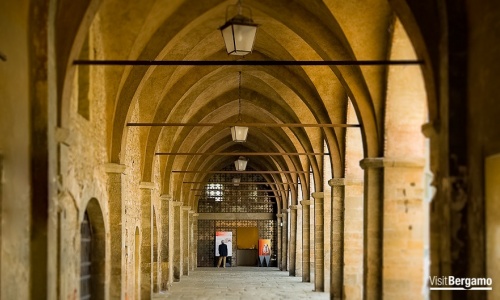
The itinerary starts in the city’s oldest museum, the Archaeological Museum. It is located inside a building in the Cittadella. Inside it you can see archaeological finds of public monuments of the Roman city. Continue along the Upper Town’s main street. Here, they found the remains of a large columned portico from an important building, probably with a public function. On the corner between Via Colleoni and Vicolo di Sant'Agata you can see a portion of a mosaic floor dating back to the 1st century AD. In the same area, in the medieval period, a magnificent fountain was built.
The itinerary starts in the city’s oldest museum, the Archaeological Museum. It is located inside a building in the Cittadella. Inside it you can see archaeological finds of public monuments of the Roman city. Continue along the Upper Town’s main street. Here, they found the remains of a large columned portico from an important building, probably with a public function. On the corner between Via Colleoni and Vicolo di Sant'Agata you can see a portion of a mosaic floor dating back to the 1st century AD. In the same area, in the medieval period, a magnificent fountain was built.
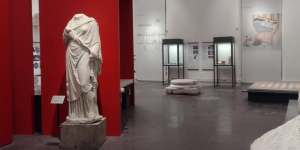
The first exhibition of the current Archaeology Museum was located in the Loggia under the Palazzo della Ragione, in Piazza Vecchia, where it was simply a “collection of old stuff” and included several epigraphs.
Since then, the collection moved several times: in fact, it required more and more space due to the conspicuous and constant donations over the centuries. Today the Museum is housed in the Cittadella Palace (XIV Century) built by the Visconti family, Milan’s ancient rulers, in a new, expanded exhibition created in occasion of Bergamo brescia Capital of Culture 2023.
Visitors can plunge into history just looking at the museum’s walls. Visiting the Archaeology Museum is like going on a journey across the history of Bergamo and its territory, from its prehistoric background to the Langobardic domination in the Middle Age.
It is very common do find groups of children and kids inside it. In fact, the “Centro Didattico-culturale”, the former “Gruppo Guide del Museo” established in 1981, contributes to give a strong educational spirit to the Museum, by carrying out many guided tours, workshops and activities for children and adults.

Following some renovations in the restaurant "Da Mimmo", a 7-metre Roman wall was found under the current street level. To the south of the wall it was possible to see two square structures measuring 1.30m on each side, and 3 metres apart from each other. They are the foundations of columns of a building of a certain importance and which probably had a public function. It is thought that its portico with large columns overlooked the main street of the Roman city.
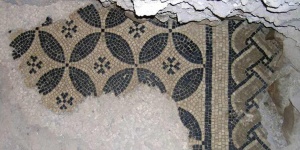
At the corner of Vicolo Sant'Agata, at Via Colleoni 13, a portion of a mosaic floor from a Roman-era building was found. In the Middle Ages a fountain was built here in two frescoed rooms covered by a masonry vault.
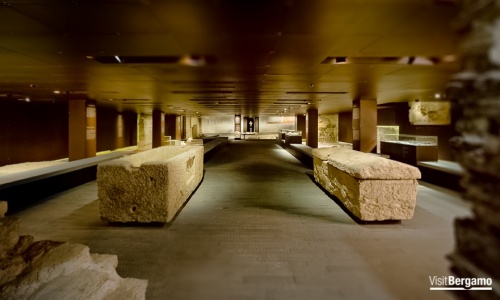
In the heart of the city you will discover the history of the magnificent monuments that frame Piazza Vecchia. These include the Palazzo del Podestà and the Campanone (Bell Tower), and here you will discover the remains and the history of the ancient Roman forum. The history of the Cathedral of Sant'Alessandro of the Santa Croce Chapel awaits you. Here, you will discover how during the Roman era there were nobiliary houses.
In the heart of the city you will discover the history of the magnificent monuments that frame Piazza Vecchia. These include the Palazzo del Podestà and the Campanone (Bell Tower), and here you will discover the remains and the history of the ancient Roman forum. The history of the Cathedral of Sant'Alessandro of the Santa Croce Chapel awaits you. Here, you will discover how during the Roman era there were nobiliary houses.
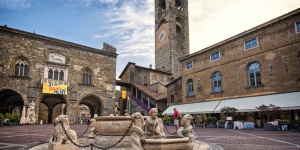
At the base of the Campanone you can admire the remains of the Roman forum. Between the first and second century AD, the forum was the centre of the city, the heart of public life. Public and religious ceremonies were held here, assemblies were convened, justice was administered and trade activities took place. Little is known of the Bergamo forum. The remains of some shops and a street are visible.
Here you can also see the remains of the proto-urban centre of the Golasecchian Celts, the first inhabitants of the hill, between the tenth and the ninth century BC.
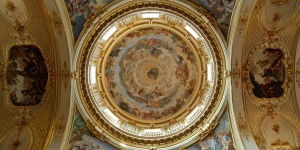
The Cathedral, or “Duomo”, is located in Piazza Duomo, in the heart of the Old Town: this area was already a sacred place in the V Century B.C., as proved by the underground layers. The building holds numerous treasures, such as the paintings by Giovan Battista Moroni and Andrea Previtali, the Martyrdom of Saint John Bishop by Giambattista Tiepolo, an altarpiece by Carlo Ceresa and some wood and marble inlays by Andrea Fantoni.
However, the most precious item you can admire is the tiara belonged to Pope John XXIII, now Saint John XXIII, who was born in the village of Sotto il Monte, near Bergamo: a sparkling gold headgear decorated with pearls, rubies, diamonds and emeralds, created by the goldsmith Attilio Nani.
The mortal remains of Saint Alessandro Martyr, Bergamo’s patron saint, are kept in an urn inside the high altar.
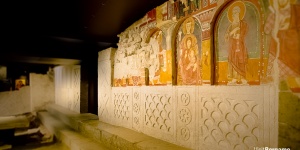
The Museum and Treasure of the Cathedral opened in 2012 under the Sant’Alessandro Cathedral. Here, during the adjustment works in 2004, several archaeological remains have been discovered, dating back to the X Century B.C. up to the XVI A.D.: prehistoric settlements, Roman domus remains, ruins of the Paleochristian church and the Romanesque cathedral.
By means of this Museum, Bergamo’s Diocese aims to disclose the church’s history, showing its building phases and let the visitor enjoy the sacred and beautiful atmosphere of the old San Vincenzo Cathedral, by displaying numerous precious items of religious art.
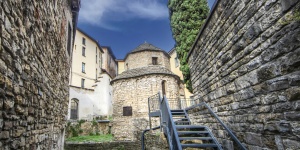
The precious religious complex of the Upper Bergamo, comprising the Basilica of Santa Maria Maggiore and the Cathedral, also includes the Santa Croce Temple, which is currently almost concealed from view but used to have a very significant role for the city centre. The building is mentioned for the first time in a document dating back to 1133, which defines it as the “capella episcopi”: the bishop’s chapel.
What was the real function of this small temple? Linked to the old Palace of the Bishop, together with the Basilica, it used to be the Curia Hall, where the Bishop held audience.
It consists of two overlying structures, featuring a quatrefoiled plan and an octagonal plan respectively, and it recalls the central layout of other Romanesque buildings in Bergamo’s territory, such as San Tomè Round in Almenno San Bartolomeo, the basilica of Santa Giulia in Bonate and the Priory of Sant’Egidio in Fontanella, near Sotto il Monte.
Moreover, inside the temple you can also admire numerous medieval frescoes recently rediscovered, depicting some episodes of the life of Jesus.
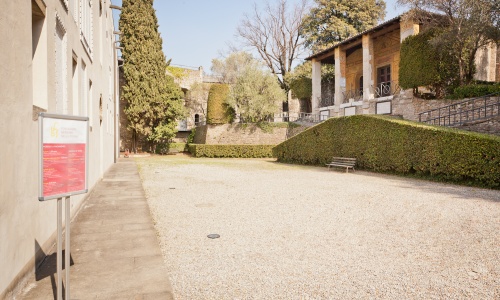
At the Rocca, you will find the only Roman cistern in Bergamo where it is still possible to see the remains. Continue to Vicolo Aquila Nera, the largest archaeological area in the entire city. At the corner between Via Vagine and Via Tassis you will discover remains of a Roman road and remains of wall structures. The last stage of this itinerary throughout history is Piazza Mascheroni. Important and interesting remains can be observed inside the restaurant Hostaria in the Relais San Lorenzo.
At the Rocca, you will find the only Roman cistern in Bergamo where it is still possible to see the remains. Continue to Vicolo Aquila Nera, the largest archaeological area in the entire city. At the corner between Via Vagine and Via Tassis you will discover remains of a Roman road and remains of wall structures. The last stage of this itinerary throughout history is Piazza Mascheroni. Important and interesting remains can be observed inside the restaurant Hostaria in the Relais San Lorenzo.
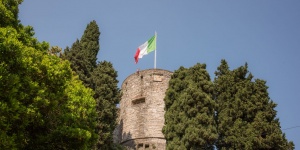
Findings of the remains of some water cisterns show that Bergomum had a very well organised water supply system. In the Rocca complex it is still possible to see the remains of a Roman cistern, the only one that can be visited. In the Sant'Agata monastery complex there are six cisterns still full of water, but it is not possible to visit them due to the cloistered character of the monastery. Other remains of cisterns, which today cannot be visited, have been identified at various points in the Upper Town, including the remains of a cistern recently discovered near Palazzo Moroni.
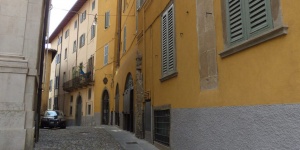
One of the most extensive archaeological sites can be found in Vicolo Aquila Nera. Unearthed by chance in the 80s during the construction of a storage area of the Angelo Maj Library. The site has a real millenarian split in a portion of the slope occupied from the fifth century B.C. until 1800. The oldest traces refer to the settlement of the Celtic Golasecchians. In the Middle Ages the New Monastery stood in this area. Not far away are the remains of pipes, glazed and engraved pottery vases and furnishings of a pipe shop.
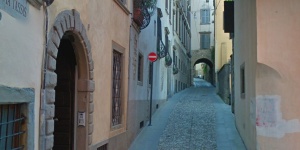
At the corner of Via Vagine and Via Tassis the remains of a paved road section and networks of wall structures have been found. The construction of the road dates back to the first decades of the first century AD. Materials were found in the levels of preparation of the road level, which also confirm a housing presence since the late Republican age. In Via Tassis a section of a parallel road has been found. The two roads perhaps marked a block closed to the south by Via Colleoni.

Under the Venetian rule, Piazza Mascheroni was the site of the market. Inside one of the buildings surrounding it there is a small treasure: impressive structures of cellars and floors of buildings from the Middle Ages and the Renaissance. Studies conducted between 1998 and 2011 have brought to light remarkable remains. Remains ranging from the protohistoric age to the Renaissance era. A terraced wall from the III/II century B.C. is the oldest find in this area. Remains that lead to the discovery of the existence of apsidal environments with vaulted rooves (now lost), reused in medieval and modern age as shops and warehouses.